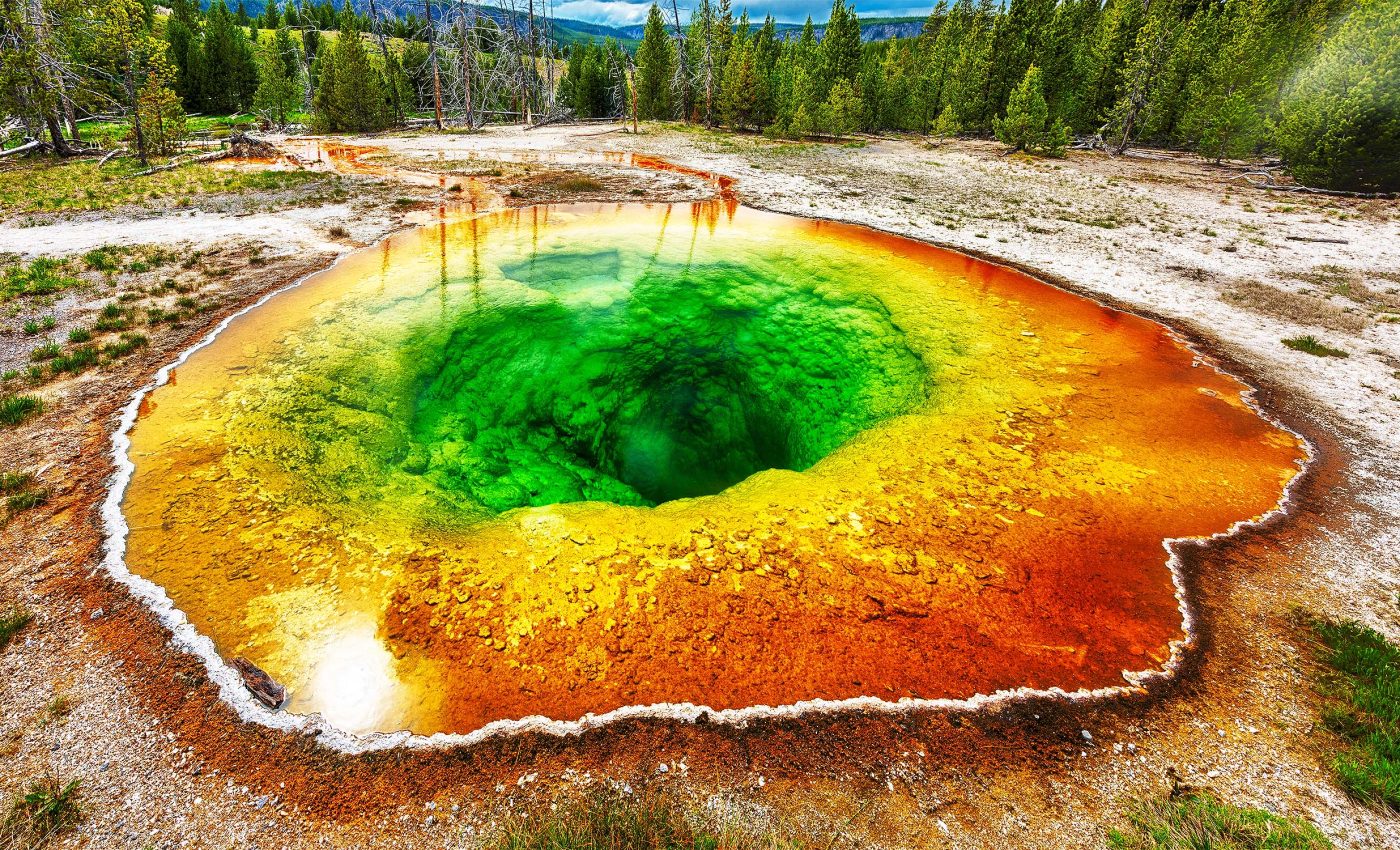
Giant viruses found in Yellowstone's hot springs may be near the root of all life on Earth
Yellowstone’s seething terraces and steaming pools draw visitors for their color and heat, but to microbiologists they offer something else: a peek at the sort of place where the earliest stirrings of life may have taken hold in the form of giant viruses.
One acidic creek in the park, forever gurgling around 112 °F, has now revealed an unexpected cast of microbial giants that could have nudged evolution along.
Giant viruses found in Yellowstone’s hot springs – organisms so large they sometimes escape standard filters – have been turning up in many odd corners of the planet. Yet their role in shaping early ecosystems has remained hazy.
A fresh look at a green algal mat in Yellowstone suggests these outsized invaders were not latecomers but long-standing residents whose presence dates back a billion-plus years.
Yellowstone’s living time capsules
Hot springs change, dry up and reappear over geological time, but each one preserves chemical and physical traits once common on early Earth.
The creek known as Lemonade runs through a narrow channel lined with bright-green filaments of red algae, or Rhodophyta. In water that hits pH 2, those algae thrive alongside sulfur-loving microbes that shrug off toxins such as arsenic.
After skimming DNA from the mat, nearby soil and the spaces between stones, researchers filtered out familiar bacterial, archaeal and algal sequences.
Roughly 3,700 potential viral fragments remained, and almost two-thirds belonged to the giant class. Computer sleuthing pieced together most of the genomes of about 25 distinct viruses.
“The connections between the viruses and [their hosts] are ancient,” Rutgers University genome scientist Debashish Bhattacharya explains, pointing to proteins whose tightly packed shapes suit a habitat that seldom cools below 112 °F.
Giant viruses and Yellowstone hot springs
Giant-virus DNA carries the same three-letter code preferences as other creek dwellers, signaling a long residence rather than a recent arrival from cooler pools.
When the team built a viral family tree, the Lemonade Creek line split near the very base, implying the partnership with red algae may stretch back 1.5 billion years.
“Understanding ancient virus evolution may be key to our understanding of [life’s] early developments,” notes Simon Roux, a microbiologist at the Department of Energy’s Joint Genome Institute who was not involved in the work.
Many hot-spring inhabitants borrow genes to cope with heat and toxins. Exactly how a complex eukaryote such as algae grabs DNA from simple bacteria has puzzled biochemists.
Andreas Weber, a biochemist at Heinrich Heine University Düsseldorf, calls hot springs “time capsules that provide a window into early eukaryotic life.”
He suspects giant viruses act as middlemen, grabbing genes from bacteria or archaea, then handing them to the algae they infect.
In that shuttle role, “the viruses likely play an important role in the long-term stability of the hot spring communities,” he adds.
Separate worlds inches apart
Sampling revealed three viral neighborhoods: one on the algal mat, one in adjacent soil and one wedged between rocks.
“I would have thought that there would be more exchange between neighboring sites that are sometimes only a few centimeters apart,” Weber admits.
Their isolation “points out how little we really know about the diversity and role of viruses in microbial communities,” observes Mark Young, an environmental virologist emeritus at Montana State University who was not involved with the work.
Why Yellowstone’s giant viruses matter
Giant viruses are not the only curiosities to surface in the park. Scientists George Rice and Mark Young spotted another virus drifting among heat-loving archaea in the Midway Geyser Basin.
Archaea are thermophiles that flourish in pools between 158 °F and 197 °F and at pH values as low as 1; they have yielded just 36 viruses out of more than 5,000 known.
“Anywhere there’s life, we expect viruses,” Young says, stressing how protected reserves aid such finds.
“This is a stellar example of why we need places that are protected for scientists to come in and look for new discoveries,” park geologist Hank Heasler agrees.
Rice’s team reported that the Yellowstone virus’s protein shell resembles coats from viruses that infect bacteria and animals.
“Thermophiles are deeply rooted in the tree of life,” Young notes, hinting that the virus predates the split between bacteria, archaea and eukaryotes roughly 3.5 billion years ago. Genetic work backs the idea.
“The genes look different [from those of other viruses] so they probably do different things,” Rice says.
Viruses and the search for alien life
Viruses shuttle genes with abandon. “They’re not just a passenger,” Young emphasizes. “They are the major source of biological material on this planet. They have a huge role in moving genes around.”
That talent intrigues astrobiologists: “If we’re going to go to non-Earth-based bodies to look for life, this discovery gives NASA an approach for looking for life in hot-temperature environments, which we know to exist off of Earth,” Young points out.
Enzymes that stay stable in boiling water could also feed medical diagnostics or industrial reactions that now falter under heat.
Lessons learned from Yellowstone’s giant viruses
The story flowing from a modest creek in Yellowstone widens our picture of life’s early days.
Giant viruses, once dismissed as curiosities, appear to have stood shoulder to shoulder with the first eukaryotes, swapping genes, recycling nutrients and carving out niches even when resources were scarce.
On a planet where every drop of hot water seems to shelter a unique community, each discovery reminds us how much more waits beneath the steam.
The full study was published in the journal Communications Biology.
—–
Like what you read? Subscribe to our newsletter for engaging articles, exclusive content, and the latest updates.
Check us out on EarthSnap, a free app brought to you by Eric Ralls and Earth.com.
—–













